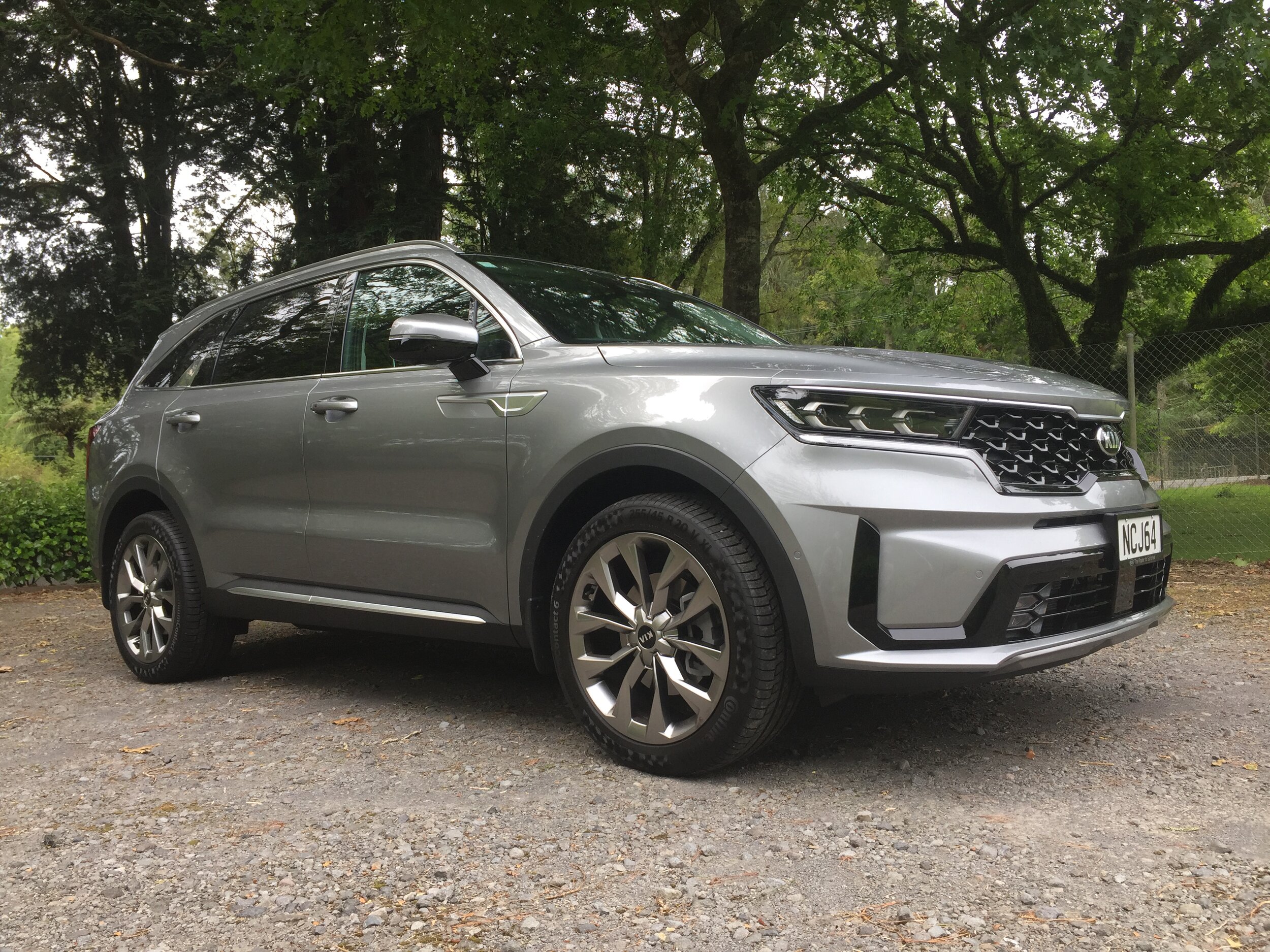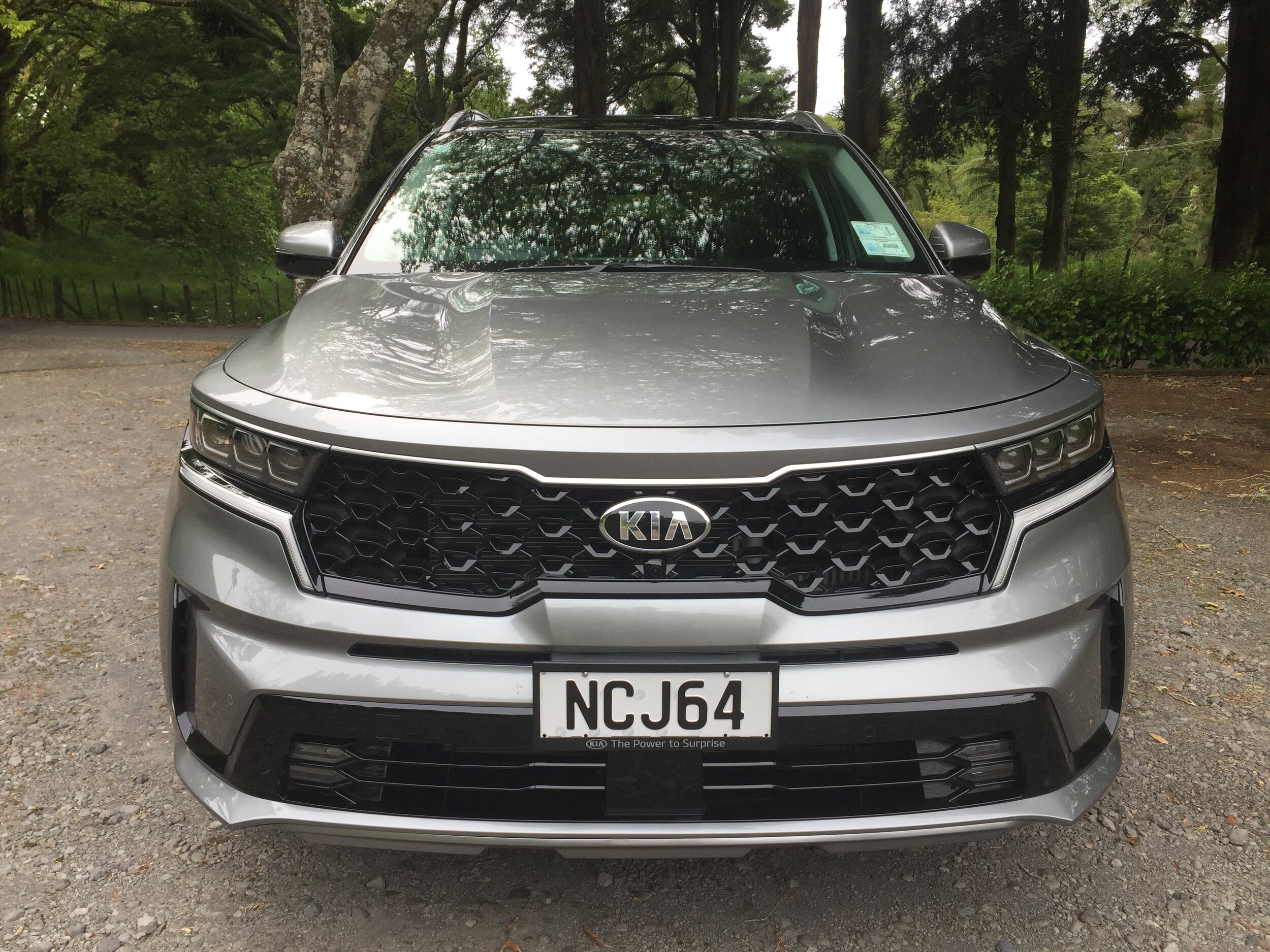Kia Tasman TXS roadtest review: Rough see, smoother sailing
/If you can weather the styling storm and focus on the design, then the Tasman imparts as a very credible concept. But maybe that’s a big ‘if’.
Read MoreIf you can weather the styling storm and focus on the design, then the Tasman imparts as a very credible concept. But maybe that’s a big ‘if’.
Read MoreHere’s a car that truly amps up the compact electric category.
Read MoreChina is the electric car hot spot, so potentially a Korean product from there should hold some aces.
Read MoreAs EVs get bigger, so do ambitions and expectations.
Read MoreThe E-GMP platform seems set to be the basis for brilliance; this car lends its maker every reason for confidence.
Read MoreKia’s facelifted warm hatch tracks down original tarmac.
Read MoreDiesel stands tall in Kia’s most popular sports utility. But is it a crucial element?
Read MoreHow does the plug-in hybrid edition of a well-regarded large SUV stand up against ‘fake electric’ claims?
Read MoreHOW’s this for anticipation? When you turn the Kia Stinger’s Drive Mode selector to Sport, the side bolsters on the driver’s seat fold inwards to hold you more securely in place.
That little action acts as a prelude to some enthusiastic motoring – if you want it - aboard this big 3.3-litre twin-turbocharged V6-engined rear driven sedan.
Read More
Price: $76,990
Powertrain and economy: 2.2-litre turbocharged in-line diesel, 148kW/440Nm, 8-speed automatic, AWD, combined economy 6.1 L/100km.
Vital statistics: 4810mm long, 1695mm high, 1900mm wide, 2815mm wheelbase. Luggage space up to 821mm (with five seats in use). 20-inch alloys wheels.
We Like: Excellent interpretation of Kia’s ‘refined boldness’ family design, very high level of standard specification, nice safe drive.
We don’t like: Rotary gear selector isn’t very involving.
THREE hundred and thirty-three ‘pyrodrones’ simultaneously launching hundreds of fireworks in a synchronised aerial display in the skies above the South Korean city of Incheon.
Kia went big in launching its new brand logo and slogan; this recent effort established a Guinness World Record for ‘the most unmanned aerial vehicles launching fireworks simultaneously’. (Personally, I feel that almost must qualify for another record – for the most useless world record).
The new logo spells out the word Kia in an unbroken and rhythmical line that is designed to resemble a handwritten signature. It’s rather nice, certainly better than the staid outgoing format.
Kia says the design embodies the brand’s rising ambitions – as does a new brand slogan: Movement That Inspires.
Talking of inspirational … the new fourth-generation Kia Sorento large sports utility. I feel it deserves to stand as one of South Korea’s best vehicles.
Of course it could be said you have to say that, because the latest Sorento is one of the newest vehicles to emerge from the peninsula, and all new models should be better than what were before, but this one really is very good.
Built on a revised platform, it currently configures with a 2.2-litre turbocharged diesel mated to an eight-speed double-clutch automatic transmission feeding all-wheel drive.
This year it will be joined by two hybrid versions, the more advanced featuring a new-generation 1.6-litre turbocharged electric motor-assisted drivetrain, also AWD, and with a degree of pure electric driving and plug-in replenishment.

The latter was one of eight winners in the 2020 Golden Steering Wheel Awards, delivered annually by a couple of big German media concerns and decided by an 18-strong jury.
In New Zealand, the turbodiesel version of the Sorento didn’t arrive early enough to be considered for this country’s Car of the Year Award, which is administered by the New Zealand Motoring Writers Guild. It will be on the primary consideration list for the 2021 gong, by which time the PHEV model will also be on the market. I’d suggest it has to be odds-on that the big Kia will be a contender.
Importantly, Sorento is the flagship model in a comprehensive range of SUVs now presented by Kia. It begins with the recently-landed Stonic, continues through the Seltos and Sportage - which are two of the biggest-selling SUVs on the Kiwi market - and includes the electrified Niro which is available as both a hybrid and plug-in hybrid.
All these vehicles, with perhaps the Niro the exception, are notable for their similarity of exterior design. During the week I had the Sorento, a number of my neighbours mistook it for a Seltos.
Kia describes this design language as “refined boldness”. Indeed. The new Sorento’s bodywork features sharp and sculpted lines and creases, and a new interpretation of the brand’s ‘tiger nose’ grille. And although the vehicle is just one centimetre longer than the model it replaces, it looks bigger thanks to a 35mm longer wheelbase and shorter front and rear overhangs.

At the rear, the new Sorento has vertical tail lights that wrap around the side of the body in a design inspired by the even bigger Kia Telluride, which was named the 2020 North American SUV of the Year. It can’t come to New Zealand as it is built in left-hand drive only.
The Sorento is built on Hyundai/Kia’s third-generation large SUV platform, which is based around a compact engine bay structure and shorter front and rear overhangs, and this combines with the longer wheelbase to provide improved interior space.
A full seven-seater, it boasts among the largest luggage capacities in its class – up to 187 litres with all seven seats in use which is a 32 percent increase on its predecessor, 616 litres when operating as five-seater, and more than 2000 litres with both the second and third rows folded.
That’s a substantial amount of rear cargo space, and notably that room as a five-seater can be increased to 821 litres by sliding the second row of seats forwards. Or less if that row is slid backwards to create more legroom for passengers.

It needs to be mentioned at this stage that although the Sorento is a very close relative of the Hyundai Santa Fe, to the extent of having the same powertrain and levels of comfort and safety specification, they are not fully identical.
A major difference is size. Sorento is the larger of the two, with a body that is 25mm longer and, crucially, a wheelbase that is 50mm longer. That’s no doubt the reason why the Kia’s interior load space is quite a bit more than what is published by Hyundai. I suppose it also needs to be pointed out that I have yet to drive the Santa Fe – that will happen in a couple of weeks.
Sorento’s interior design seems substantially different to that of the Santa Fe – but the content and the intent remains the same.
Kia’s ‘Supervision’ instrument cluster is fully digitised, and this allows the Deluxe and ultimate-step Premium models to convert the tachometer and speedometer into blind-spot monitors whenever their turn signal is activated – the speedo for the left side and the tacho for the right. The views back down the flanks of the vehicles come via wide-angle cameras located in their wing mirror housings.
Other technologies include rear cross traffic alert, blind-spot collision avoidance, smart cruise control with ‘stop/go’, driver attention warning, lane follow assist - which automatically steers the Sorento so it can remain in the middle of a lane - and in the top models, around view monitor.

The Premium model I drove is also the first Kia available with Remote Smart Parking Assist, which enables drivers to stand outside the vehicle and use the key fob to move it backwards and forwards into tight parking spaces. Kia says it is so it can be easier for passengers to get in and out of the vehicle in tight parking spaces, or if another driver parks too close to be able to access any of the doors.
Premium also features a shift-by-wire rotary gear selector, while the remaining Sorento models continue with a traditional gear lever. The E-Shift dial might be simple to use - featuring just Reverse, Neutral and Drive and with a push-button Park control in its centre - but I felt the lack of a gearshift removes a sense of involvement with the vehicle.
Better news a little further back on the centre console, however. There, is another rotary controller that can be used both to select four Drive modes (comfort, eco, sport and ‘smart’) and to select three terrain modes (snow, mud and sand) which among other things controls the vehicle’s electronic stability control as well as the distribution of torque to all four wheels.
The drive mode selector is great, particularly the Smart mode which is judges what the driver’s driving style is and selects a suitable mode all on its own. As for the Terrain mode selector – while I suppose it is nice to have it there, I doubt it would be used much. A pricey SUV with 20-inch wheels shod with 45-series tyres and a 176mm ground clearance isn’t really designed for slogging through the mud. More likely slogging through the leafy streets of our cities….

Overall, the Sorento interior impresses for being spacious, comfortable, and loaded with safety, connectivity and infotainment technology. With the top models this even includes mood lighting which emits soft ambient downlighting from beneath the dashboard to help create a lounge-like atmosphere.
It’s not perfect though. Apple Carplay and Android Auto phone integration is a little cumbersome. But overall, the interior environment is very good, and at the Premium level, very comfortable.
In recent years a strong feature of the Sorento – and the Santa Fe – has been its R-Series 2.2-litre turbodiesel. For this new-generation model the engine has been upgraded via a number of improvements including a new aluminium block which replaces a cast iron block, all of which has allowed this latest ‘Smartstream’ diesel to weigh in 38.2kg lighter than that aboard the third-generation model.
The engine is paired with Kia’s new eight-speed wet double-clutch auto, which makes efficient use of the engine’s outputs. It also feels quieter, helped no doubt by a bodyshell that boasts a four percent increase in tensile strength which has reduced body vibration. The vehicle’s suspension system, which essentially the same as before, has also been revised to reduce noise and vibration.
This helps make Sorento an impressive SUV to drive long distance. During my time with the vehicle we put in some serious kilometres through the North Island, and its sure handling feel and quiet interior made for relaxed motoring. Just what you want with a SUV of this size. The vehicle is not what I would describe as sporty, but it is cultured.
The Premium model pricing a full $13,000 less than the equivalent Hyundai Santa Fe Limited ,which carries almost identical specification, is a big difference that quite frankly adds to the Sorento’s appeal.
And adding further will be the PHEV model, which will offer 195kW of power and 350Nm of torque, and obviously much lower fuel consumption. No prices have yet been announced, but they will probably be above those of the Premium 2.2-litre model. I can’t wait.

MotoringNZ reviews new cars and keeps readers up-to-date with the latest developments on the auto industry. All the major brands are represented. The site is owned and edited by New Zealand motoring journalist Richard Bosselman.